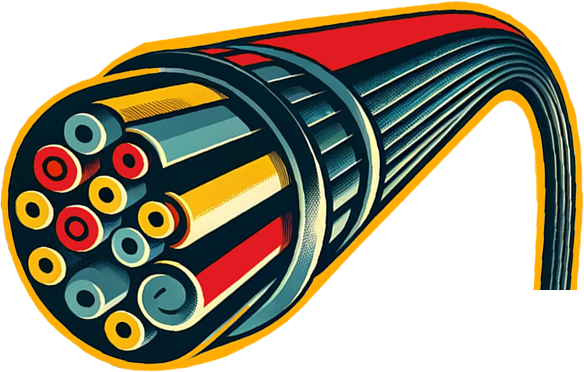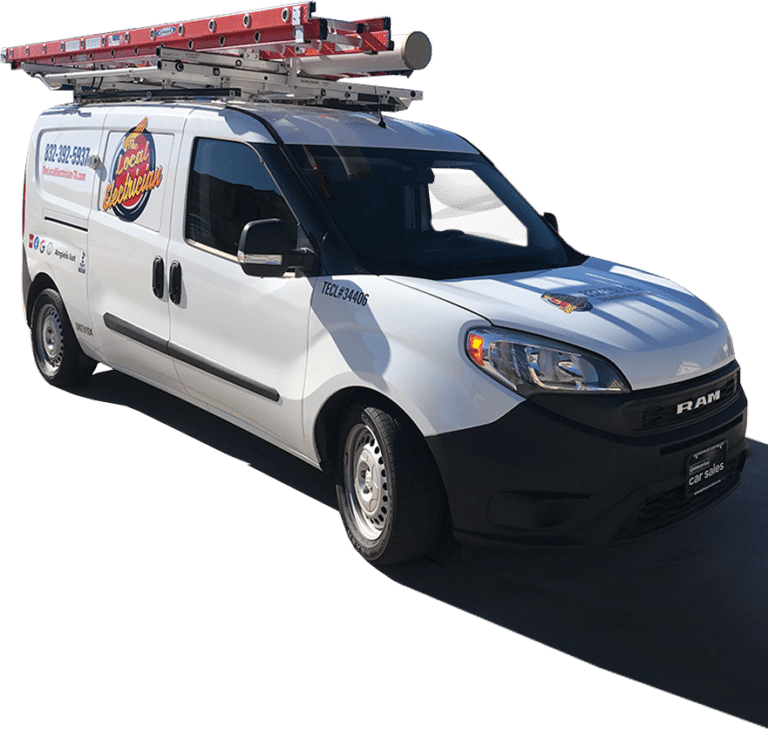Have you ever wondered how motion sensor lighting can transform your home?
This modern innovation is not just a passing trend but a pivotal upgrade for contemporary living spaces. Motion sensor lighting enhances security, boosts energy efficiency, and adds unparalleled convenience, making it a must-have for any home.
Motion sensor lighting is gaining popularity among homeowners for its practicality and benefits. By automatically turning lights on and off based on movement, these systems ensure that lights are only used when needed, cutting down on unnecessary energy consumption. This functionality is especially valuable in high-traffic areas such as hallways, bathrooms, and outdoor spaces.
Understanding how motion sensor lighting works can help you appreciate its role in a modern home. These systems typically use one of three types of sensors: passive infrared (PIR), ultrasonic, or microwave. Each type detects motion differently, ensuring reliable performance in various environments and applications.
In this guide, we delve deeper into the workings, benefits, and applications of motion sensor lighting. You’ll see why it’s an essential feature for any forward-thinking homeowner. Also, we’ll explore the intricacies of how these lights function, their key benefits, and the significant impact they can have on both your home and your lifestyle.

How Motion Sensor Lighting Works
Understanding the mechanics behind motion sensor lighting can help you make informed decisions about integrating this technology into your home.
At its core, motion sensor lighting operates by detecting movement within a specified area and responding by activating the light. When no motion is detected for a predetermined period, the light automatically turns off, conserving energy and extending the lifespan of the bulb.
Basic Functionality
Motion sensor lighting relies on different types of sensors to detect movement. The most common types include:
- Passive Infrared (PIR) Sensors: These sensors detect infrared energy, which is emitted by people and animals. When a warm body passes through the sensor’s field of view, it detects the change in infrared energy and triggers the light.
- Ultrasonic Sensors: These sensors emit ultrasonic sound waves that bounce off objects in the room. When there is movement, the frequency of the returned waves changes, signaling the sensor to turn on the light.
- Microwave Sensors: Similar to ultrasonic sensors, microwave sensors emit microwave signals that reflect off objects. They can detect movement through walls and are highly sensitive, making them ideal for certain applications where other sensors might fail.
Types of Sensors Used
Each type of sensor has its strengths and is suitable for different environments:
- PIR Sensors: Best for indoor use in areas where there is a clear line of sight, such as hallways and living rooms. They are less prone to false triggers from non-heat sources.
- Ultrasonic Sensors: Ideal for indoor spaces with obstructions, such as offices with partitions. They can cover a broader area and are sensitive to minor movements.
- Microwave Sensors: Perfect for outdoor or industrial environments where detecting movement through obstructions is necessary. Their high sensitivity can sometimes lead to false alarms in busy areas.
How It All Comes Together
When integrated into a lighting system, these sensors provide seamless and automatic lighting control. The sensor detects movement, sends a signal to the light fixture, and the light turns on almost instantaneously. After a set time of no detected movement, the sensor signals the light to turn off, ensuring energy is not wasted.
Understanding these fundamentals can help you choose the right motion sensor lighting system for your needs. Whether you’re looking to enhance security, save on energy costs, or add convenience to your daily routine, motion sensor lighting offers a versatile solution that can be tailored to fit various applications.
Key Benefits of Motion Sensor Lighting
Motion sensor lighting is more than just a modern convenience—it’s a powerful tool that offers numerous benefits to homeowners. By integrating these systems into your home, you can experience enhanced energy efficiency, improved security, and increased comfort. Here’s a closer look at the key advantages of motion sensor lighting.
Energy Efficiency
One of the most significant benefits of motion sensor lighting is its ability to save energy. Traditional lighting systems often remain on longer than necessary, leading to wasted electricity and higher utility bills.
Motion sensor lights, however, only activate when movement is detected and automatically turn off after a set period of inactivity. This ensures that lights are used only when needed, significantly reducing energy consumption.
Moreover, the integration of energy-efficient LED bulbs with motion sensor technology further enhances savings. LEDs consume less power and have a longer lifespan compared to incandescent or fluorescent bulbs, resulting in lower replacement costs and reduced environmental impact.
Enhanced Security
Motion sensor lighting is a critical component of a comprehensive home security strategy. These lights act as a deterrent to potential intruders by eliminating dark areas around your property where someone could hide.
When motion is detected, the sudden illumination can startle and discourage trespassers, making them think twice before approaching your home.
In addition to deterring intruders, motion sensor lights can provide you with better visibility at night. Whether you’re coming home late or need to step outside in the dark, having well-lit surroundings can help you navigate safely and avoid accidents.
Increased Convenience
The convenience offered by motion sensor lighting cannot be overstated. Imagine walking into a room with your hands full and the lights automatically turning on—no need to fumble for a switch. This feature is particularly useful in areas like garages, basements, and hallways where you might not always have a free hand to turn on the lights.
Motion sensor lights are also ideal for outdoor applications. They can illuminate pathways, driveways, and entryways, making it easier to move around your property after dark. The automatic nature of these lights ensures that you always have illumination when you need it, enhancing overall comfort and safety.
Energy Savings with Motion Sensor Lighting
In today’s world, energy efficiency is more important than ever, and motion sensor lighting plays a crucial role in reducing electricity consumption and promoting sustainable living.
By integrating motion sensor technology into your home, you can achieve significant energy savings while also contributing to environmental conservation.
How Motion Sensor Lighting Reduces Electricity Bills
One of the primary ways motion sensor lighting helps reduce electricity bills is by ensuring that lights are only on when needed. Traditional lighting systems often lead to wasted energy as lights are left on for extended periods, sometimes even overnight. With motion sensor lights, this inefficiency is eliminated.
The sensors detect movement and activate the lights only when someone is present, automatically turning them off after a set period of inactivity. This smart usage of lighting drastically cuts down on unnecessary energy consumption.
Additionally, many motion sensor lighting systems are designed to work with energy-efficient LED bulbs. LEDs consume significantly less power compared to traditional incandescent or fluorescent bulbs.
They also have a longer lifespan, which means fewer replacements and less waste. The combination of motion sensors and LED technology maximizes energy savings and reduces your overall electricity expenses.
Environmental Impact
Reducing energy consumption has a direct positive impact on the environment. By using motion sensor lighting, you’re not only lowering your utility bills but also decreasing your carbon footprint. The less energy you consume, the fewer fossil fuels are burned in power plants, leading to a reduction in greenhouse gas emissions.
Moreover, the extended lifespan of LED bulbs means less waste in landfills. Traditional bulbs need frequent replacement, contributing to more waste and higher environmental costs associated with their production and disposal. In contrast, LEDs used in motion sensor lights last much longer, making them a more sustainable choice.
Practical Examples of Energy Savings
To illustrate the potential energy savings, consider the following example: A typical 60-watt incandescent bulb left on for 10 hours a day uses 600-watt-hours or 0.6 kilowatt-hours (kWh) daily. Over a month, this amounts to 18 kWh.
By replacing this bulb with an equivalent LED bulb that uses only 10 watts and integrating it with a motion sensor that ensures the light is on for just 3 hours a day, the daily usage drops to 0.03 kWh, and the monthly usage drops to just 0.9 kWh. This significant reduction in energy usage translates to noticeable savings on your electricity bill.
By adopting motion sensor lighting, you can enjoy substantial energy savings and contribute to a more sustainable future. This technology not only offers financial benefits but also supports environmental conservation, making it a wise choice for any eco-conscious homeowner.

Installation Tips for Motion Sensor Lighting
Installing motion sensor lighting in your home is a straightforward process that can significantly enhance your home’s security, energy efficiency, and convenience. By following a step-by-step guide and being aware of common mistakes, you can ensure a successful installation.
Step-by-Step Installation Guide
- Choose the Right Location: Identify the areas where you want to install motion sensor lights. Ideal locations include entryways, driveways, staircases, hallways, and other high-traffic areas. Ensure that the sensors have a clear field of view to detect movement effectively.
- Gather Your Tools and Materials: Before you start, make sure you have all the necessary tools and materials, including a ladder, screwdriver, drill, wire connectors, electrical tape, and the motion sensor light fixture.
- Turn Off the Power: Safety first! Turn off the power to the circuit where you will be installing the light. Use a voltage tester to confirm that the power is off before you begin any electrical work.
- Remove the Old Fixture: If you are replacing an existing light fixture, carefully remove it by unscrewing it from the wall or ceiling and disconnecting the wires. Make sure to support the fixture as you disconnect it to prevent it from falling.
- Install the Mounting Bracket: Attach the mounting bracket that comes with your motion sensor light to the junction box. Make sure it is securely fastened and leveled.
- Connect the Wires: Connect the wires from the motion sensor light to the corresponding wires in your electrical box. Typically, this involves connecting the black (live) wire to the black wire, the white (neutral) wire to the white wire, and the green or bare (ground) wire to the ground wire or screw. Use wire connectors to secure the connections and wrap them with electrical tape for added safety.
- Attach the Light Fixture: Once the wires are connected, carefully attach the motion sensor light fixture to the mounting bracket. Secure it with the screws provided, ensuring it is firmly in place.
- Adjust the Sensor Settings: Most motion sensor lights allow you to adjust the sensitivity, duration, and range of the sensor. Set these according to your preferences and the specific needs of the location.
- Restore Power and Test: Turn the power back on and test the motion sensor light. Walk around the detection area to ensure the light activates correctly and adjust the settings if necessary.
- Secure and Finalize: Once you are satisfied with the installation and the settings, ensure that all screws are tight and the fixture is secure. Clean up any tools and materials, and enjoy your new motion sensor lighting.
Common Mistakes to Avoid
- Incorrect Wiring: One of the most common mistakes is incorrect wiring. Always double-check that the wires are connected correctly and securely. Miswiring can lead to malfunction or even pose a safety hazard.
- Improper Placement: Placing the motion sensor light in the wrong location can reduce its effectiveness. Avoid placing sensors where they might be obstructed or exposed to direct sunlight, which can cause false triggers.
- Ignoring Sensitivity Settings: Not adjusting the sensitivity settings can result in either too many false triggers or insufficient detection. Take the time to fine-tune the settings to suit the specific area and conditions.
- Overlooking the Environment: Environmental factors like trees, pets, and moving objects can trigger false alarms. Ensure that the motion sensor has a clear, unobstructed view of the intended area and consider potential sources of interference.
- Neglecting to Turn Off the Power: Working with live electrical wires is extremely dangerous. Always turn off the power at the breaker and verify with a voltage tester before starting any electrical work.
By following these steps and avoiding common mistakes, you can ensure a smooth and successful installation of your motion sensor lighting, enhancing your home’s security and convenience.
Maintenance and Troubleshooting
Maintaining your motion sensor lighting ensures it remains effective and reliable for years to come. Regular maintenance and knowing how to troubleshoot common issues will help you keep your system functioning optimally.
Routine Maintenance Tips
- Clean the Sensors and Fixtures: Dust and dirt can accumulate on the sensors and light fixtures, reducing their sensitivity and effectiveness. Clean the sensors and fixtures with a soft, damp cloth every few months to ensure they remain free from obstructions.
- Check the Settings: Periodically check and adjust the sensitivity, range, and duration settings of your motion sensor lights. Environmental changes, such as new landscaping or rearranged furniture, can affect how well the sensors detect movement.
- Inspect the Wiring: Regularly inspect the wiring for any signs of wear, damage, or corrosion. Loose or damaged wires can lead to malfunction or pose a safety hazard. If you notice any issues, consider consulting a professional electrician.
- Replace Bulbs as Needed: Although LED bulbs have a long lifespan, they will eventually need replacement. Keep an eye on the brightness and performance of your motion sensor lights, and replace any bulbs that are flickering or dimming.
- Test the System Regularly: Regularly test your motion sensor lights to ensure they are working correctly. Walk through the detection area and observe if the lights activate and deactivate as expected. Make adjustments to the sensor settings if necessary.
Frequently Asked Questions (FAQ)
-
How do motion sensor lights save energy?
Motion sensor lights save energy by only turning on when movement is detected and automatically turning off after a set period of inactivity. This reduces the time lights are unnecessarily left on, significantly cutting down on electricity usage.
-
Can motion sensor lights be used outdoors?
Yes, motion sensor lights are ideal for outdoor use. They enhance security by illuminating driveways, gardens, entryways, and other exterior areas of your home.
-
How do I adjust the sensitivity of my motion sensor light?
Most motion sensor lights have adjustable settings for sensitivity, range, and duration. These settings can usually be accessed via dials or switches on the sensor unit itself.
-
Why do my motion sensor lights keep turning on and off?
Frequent cycling of motion sensor lights can be caused by several factors, including environmental interference, electrical interference, and direct sunlight.
-
What are the benefits of using LED bulbs with motion sensor lights?
LED bulbs are highly recommended for use with motion sensor lights due to their numerous advantages: energy efficiency, longevity, instant lighting, and durability.
By choosing LED bulbs for your motion sensor lights, you maximize energy savings and benefit from reliable, long-lasting lighting.
Do you currently use motion sensor lighting in your home, and if so, how has it improved your energy efficiency and security?






























